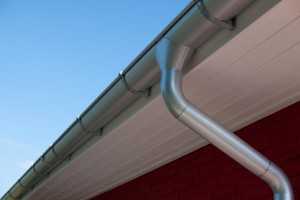 Each roof type has its distinct set of drainage requirements that the builder must follow. An efficient drainage system is an integral component of a roof structure. It collects rainfall and drains it down to plumbing lines to prevent collapse and water-related damage. Drains require periodic inspection and maintenance because they can become jammed with unwanted items, such as garbage, fallen leaves, or ice. The roof size, construction type, pitch, drain location, drainage rate, expected rainfall volume, and roof and safety requirements are important considerations when choosing the ideal drain.
Each roof type has its distinct set of drainage requirements that the builder must follow. An efficient drainage system is an integral component of a roof structure. It collects rainfall and drains it down to plumbing lines to prevent collapse and water-related damage. Drains require periodic inspection and maintenance because they can become jammed with unwanted items, such as garbage, fallen leaves, or ice. The roof size, construction type, pitch, drain location, drainage rate, expected rainfall volume, and roof and safety requirements are important considerations when choosing the ideal drain.
Siphonic Roof Drain
This type of sophisticated roof drain uses an air baffle, a kind of vacuum, which pushes water into the pipes while suppressing air to slip into them. Its main advantage is that it allows water to drain more rapidly and smoothly and effectively prevents moisture. Initial installation is relatively more expensive, but the owner will benefit from lower maintenance and repair costs in the long run.
Flat Roof Drain
Since flat roofs don’t have slants or slopes, it is highly important to install a good drainage system. Without a proper drain, the roof will easily deteriorate and collapse. If water sits on the roof for a long time, the roof structure will eventually collapse and the whole structure will become weaker. Rain gutters should be set up on an incline to keep collected water moving. Drains should also have covers to keep unwanted debris from accumulating.
Zurn Roof Drain
One of the oldest roof drain types, this drain type is long-lasting and versatile. It basically works for different roof types and offers a diverse range of options. Each drain consists of a sump or a body, a dome strainer, and a combination of a flashing clamp and gravel guard. Robbinsroofinginc.com writes that the Zurn roof drain is historically and widely used on many roof types.
Mesa Roof Drain
Made with rubber, this type of roof drain provides flexibility and an internal fluid path that ensures proper drainage, reduces corrugation and prevents sediments to plug up valves. The Mesa roof is suitable for floating roofs because it does not cause seal gaps, which means that it will not put pressure on the floating roof and scrape on the plank floor.
These roof types equally perform well, but to maximize efficiency, make sure you choose the one that is suitable for your building’s roof type. This is to ascertain that your building meets all necessary drainage requirements.